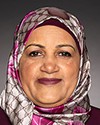Thank you for the question.
In fact, in 2019, the department developed a comprehensive francophone immigration strategy, which incorporates elements along the entire immigration continuum. We start with promotion and attraction in our overseas missions, focusing on francophone source countries, with Destination Canada, which has a foire d'emploi every year to promote Canada as a destination of choice.
That then moves on through the continuum to our selection tools. Our minister and my colleagues have mentioned several times express entry, which is an important tool for economic streams. We know that over the past years, it has been demonstrated that economic streams bear the most fruit. If we want to bring in more and more francophone immigrants, then we need to use economic streams to do it. That is why, in 2020, we raised the points for both francophone applicants and bilingual applicants in express entry. In fact, that simple change raised the invitations to apply to 8.8% in November of that year. That was a full 3.8% higher than in October of that year, so in just one month, the applications increased significantly.
We are looking at embedding francophone immigration in our regional pilots: the Atlantic immigration pilot, the rural and northern immigration pilot. As colleagues in the department are developing the municipal nominee program with provinces and territories, we are looking at embedding francophone immigration in that upcoming pilot as well.
I won't forget to note that provincial nominee programs are extremely important in attracting and landing francophone candidates. Many of our provincial jurisdictions have targets, so we are working closely with them and encouraging them to use their provincial nominee programs to bring in more and more francophone candidates. In fact, in the recent levels plan that was tabled by our minister on Monday of this week, you will see an increase in PNP spaces. We hope that provinces will rise to the challenge to bring in more and more francophones.
Right through to settlement and integration services, which is an area of expertise, I can tell you that we have increased the tool box over the past several years. We have moved from funding 50 francophone organizations to funding over 80 francophone organizations outside of Quebec. That includes spending of at least $61 million on francophone services. We have worked closely with the francophone community to establish 14 welcoming francophone communities across the country. I'm very proud that we did that by asking the communities themselves to determine which community they would want to be a welcoming community. This was not determined by the department or the government. It was in fact a recommendation from the francophone communities themselves. That, I think, is a model in terms of stakeholder consultations.
In addition, we have implemented a pre-arrival program for francophone entrance. This is a project that is working with five francophone organizations, representing all areas of the country outside of Quebec. This has increased the arrival of francophone candidates who are up to date in terms of what Canada offers, understanding the labour market much better, and we have—




